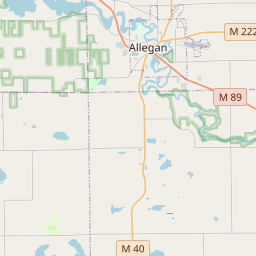Allegan Civil War Monument
Historical marker location:






April 12, 1861: The Civil War begins with the Confederate attack on Fort Sumter, located in South Carolina's Charleston Harbor.
April 15, 1861: President Abraham Lincoln issues a call for 75,000 volunteers to serve in the Union Army to suppress the rebellion.
May 24, 1861: The first major land battle, known as the First Battle of Bull Run (or First Battle of Manassas), takes place in Virginia. It ends in Confederate victory.
September 17, 1862: The Battle of Antietam in Maryland becomes the bloodiest single-day battle in American history, with heavy casualties on both sides. The Union forces, commanded by General George McClellan, manage to halt Confederate General Robert E. Lee's advance into Union territory.
January 1, 1863: President Lincoln issues the Emancipation Proclamation, declaring that all slaves in Confederate-held territories are to be set free. However, the proclamation does not immediately free all slaves in the United States.
July 1-3, 1863: The Battle of Gettysburg in Pennsylvania takes place, resulting in a significant Union victory and inflicting heavy casualties on Confederate forces. It marks a turning point in the war.
November 19, 1863: President Lincoln delivers the Gettysburg Address, emphasizing the principles of liberty, equality, and the preservation of the Union.
April 9, 1865: General Robert E. Lee surrenders to Union General Ulysses S. Grant at Appomattox Court House in Virginia, effectively ending the Civil War.
April 14, 1865: President Lincoln is assassinated by John Wilkes Booth while attending a play at Ford's Theatre in Washington, D.C.
May 10, 1865: Confederate President Jefferson Davis is captured, signaling the collapse of the Confederate government.
December 6, 1865: The Thirteenth Amendment to the United States Constitution is ratified, officially abolishing slavery throughout the country.
While this timeline provides an overview of key events, it is important to note that the Civil War spanned over four years, from 1861 to 1865, and encompassed numerous battles, campaigns, and political developments that shaped the course of American history.
More history nearby
The city of Flint, Michigan, is known for its history in the automotive industry and was once home to General Motors. However, it is also known for the Flint water crisis, which began in 2014 when the city switched its water source to the Flint River and resulted in lead contamination of the city's water supply.
The county's official establishment took place in 1831 when it was separated from the larger Kalamazoo County. The name "Allegan" is derived from the Native American word "Allegawaho," which means "lake land." The county seat was initially located in Allegan Village, but it was later moved to the town of Allegan in 1838.
One of the prominent industries in Allegan County's early years was lumbering. The area's vast forests provided an ample supply of timber, which was harvested and processed for various uses. The lumber industry helped fuel economic growth, attracting settlers and facilitating the establishment of towns and communities.
In the late 19th and early 20th centuries, agriculture became a significant economic driver in Allegan County. The fertile soil and favorable climate allowed for the cultivation of various crops, including corn, wheat, fruit orchards, and dairy farming. The county's agricultural industry continues to thrive today, contributing to its reputation as a vital agricultural region in Michigan.
Over the years, Allegan County has grown and developed, expanding its infrastructure and diversifying its economy. Today, it offers a mix of rural and urban areas, picturesque natural landscapes, recreational opportunities, and a strong sense of community. The county's rich history is celebrated through various local historical sites, museums, and events, providing a glimpse into its past while embracing the opportunities of the present.
Allegan County Timeline
This timeline provides a condensed summary of the historical journey of Allegan County, Michigan.
- 1838 - Allegan County was officially established.
- 1839 - The first courthouse and county office were built in Allegan.
- 1842 - The town of Allegan was incorporated as a village.
- 1873 - The village of Allegan became a city.
- 1874 - The Grand Rapids and Indiana Railroad reached Allegan.
- 1899 - The Allegan County Courthouse was destroyed by fire.
- 1902 - The current Allegan County Courthouse was completed.
- 1956 - The Allegan Dam was built on the Kalamazoo River.
- 1966 - The city of Saugatuck was incorporated.
- 1980 - The city of Douglas was incorporated.